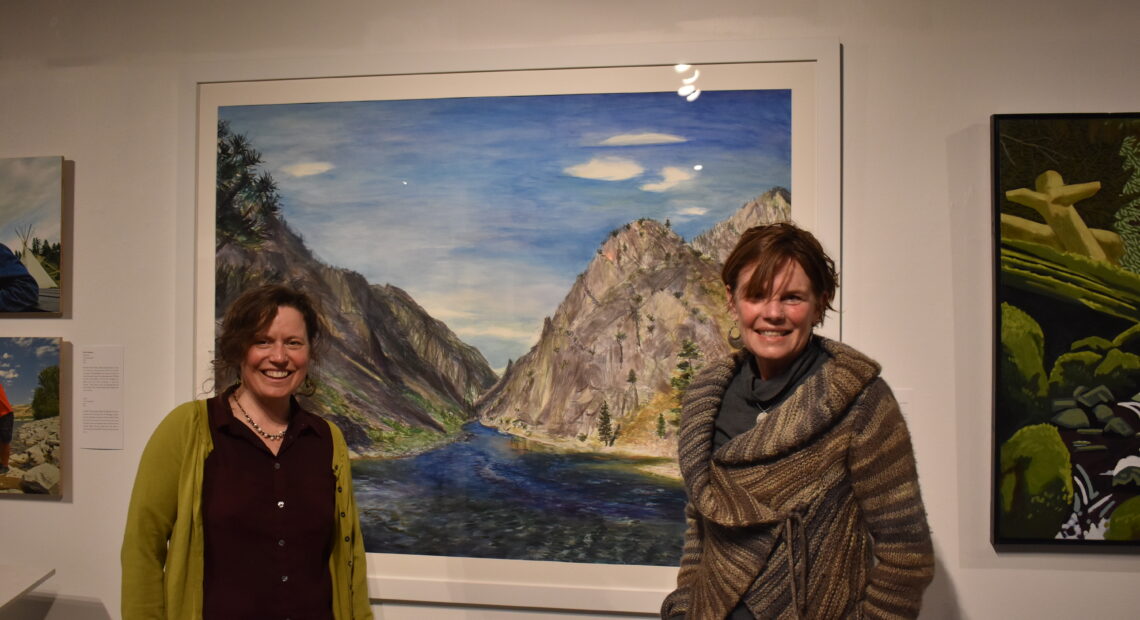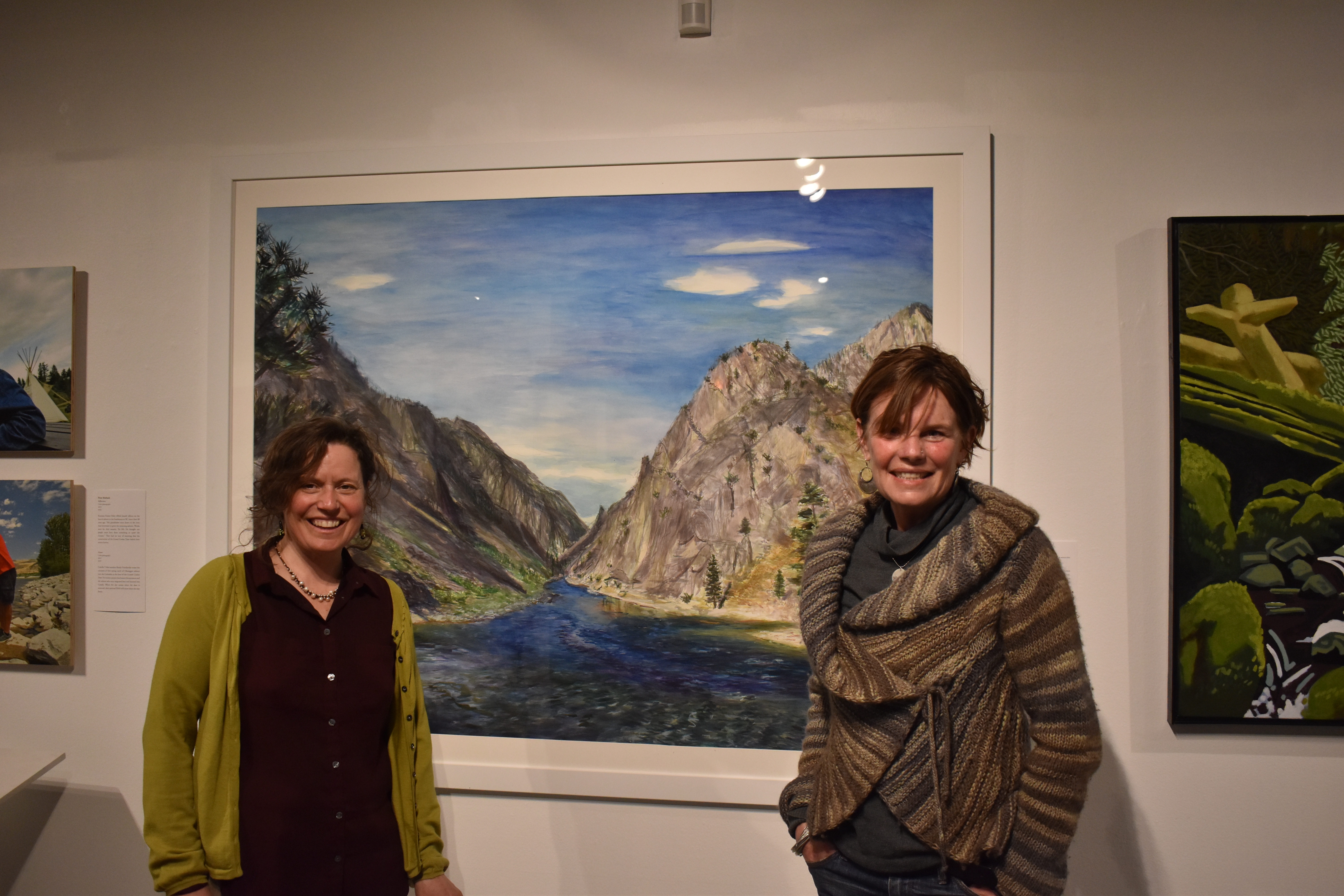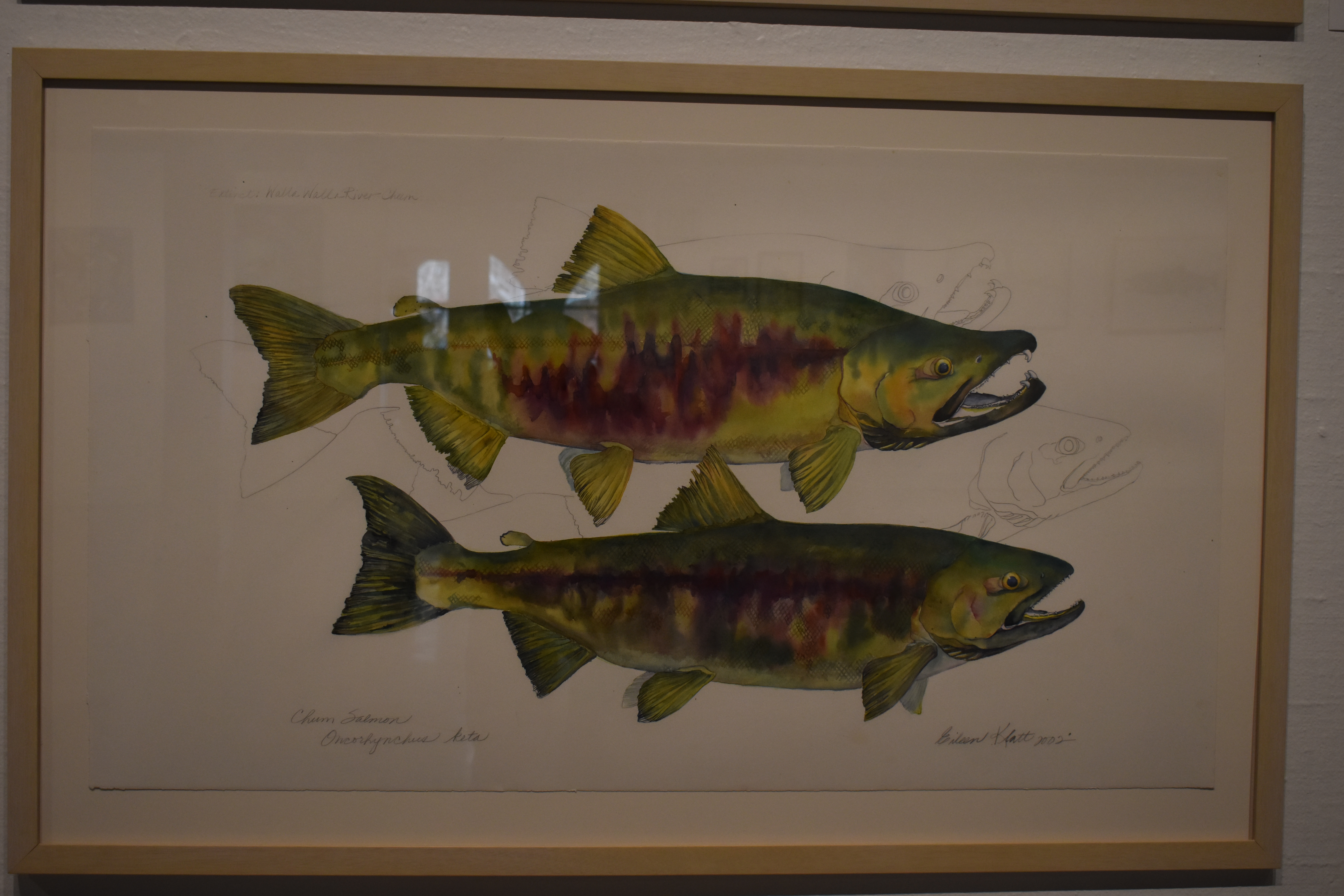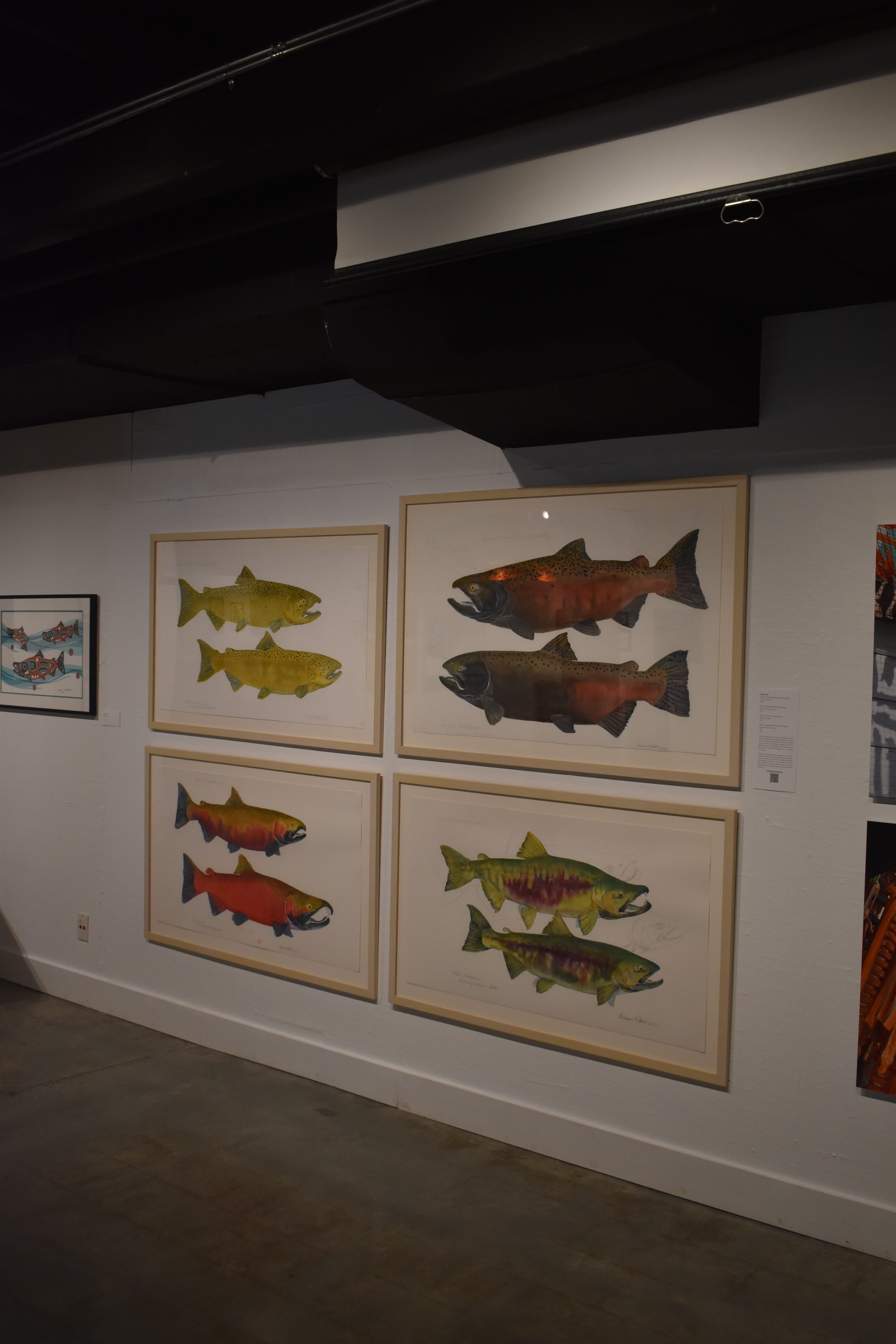
PNW artists’ work evokes salmon to educate, inspire change

Listen
(Runtime 3:42)
Read
Northwest artists have drawn inspiration from salmon as long as people have walked along the running streams. But, the movement to close four dams on the lower Snake River has some artists, activists and naturalists hopeful that their pieces will not only tug at heartstrings, but also move forward the conversation of salmon conservation and restoration.
Washington Gov. Jay Inslee recently signed budget bills to study removal of the four dams. Activists have been calling for the dam removals in order to preserve and restore salmon populations.
“We are at a moment of great urgency and opportunity for the region,” said Joseph Bogaard, executive director of the Save Our wild Salmon coalition.
The coalition has been around for over 30 years and is made up of conservation groups, commercial and recreational fishing associations, clean energy and orca advocates. Its mission is to protect and restore self-sustaining salmon populations in the Pacific Northwest, Bogaard said. In recent years, the coalition’s primary focus has been the removal of four dams on the lower Snake River.
There’s a growing commitment by lawmakers at the national level to recognize salmon extinction as a crisis, Bogaard said.
Beyond pushing for changes in our energy sector and policies, Bogaard said, art on this topic provides an opportunity for folks to think more deeply about their relationship with salmon and the Pacific Northwest.
Bogaard, along with Britt Freda, began Northwest Artists Against Extinction as a different way to raise awareness around salmon and breaching the dams in the lower Snake River.
“This project is really about reaching, engaging artists, reaching new people, reaching the same people in new ways,” Bogaard said.
Earlier this year, Freda curated an exhibit, “Honor: People and Salmon”at the Kittredge Gallery on the University of Puget Sound campus. The exhibit included works by 30 artists from the Pacific Northwest. Some works from that exhibit are on display at the Seattle Patagonia store.
Two of the artists included in those exhibits have focused intently on salmon in their artist portfolios.
Salmon populations travel along the Columbia River, which stretches from its headwaters in British Columbia to its mouth at the Pacific Ocean. The fish, which spawn in freshwater, find breeding ground within the river system’s many tributaries. Artist Eileen Klatt has visited 49 of the river’s over 200 tributaries. Klatt spent years traveling around the Columbia River Basin, collecting fish that would serve as models for the species now extinct.
“I was just enthralled with salmon,” Klatt said.

One of the mating pairs artist Eileen Klatt depicted of 61 extinct salmon from the Columbia River Basin. (Credit: Lauren Gallup / NWPB)
In 1994, Klatt came across a study that showed 253 salmon species had gone extinct in Washington, Idaho, Oregon and California. Of those, 61 populations were from the Columbia River Basin. That struck Klatt, who grew up in the area, and she was moved to see these river bodies where fish were going extinct.
“You hear all these stories of people walking on the backs of salmon, there were so many,” Klatt said. “It was just like a gut punch.”
She documented the fish and went about creating what would become “A Litany of Salmon” a project where she represented all the 61 extinct species in life-size paintings of mating pairs, based on drawings she created using real fish models. The project documents a time of great exploration and beauty in Klatt’s life, she said.

Four of Klatt’s paintings were on display at the “Honor: People and Salmon” exhibit at the University of Puget Sound earlier this year. (Credit: Lauren Gallup / NWPB)
“I just got more and more caught up in salmon and how beautiful they are and just their biology and the natural history and the political history,” Klatt said.
But, Klatt said she didn’t have a specific accomplishment or action in mind behind her work.
“I think sometimes that that’s what I can offer, is to awaken people in their heart,” Klatt said. “The activism and all the other stuff I don’t know, I just think that’s not up to me, or it’s not something that I can do.”
With her work, photographer Amy Gulick is attempting to represent what healthy salmon populations are to educate people.
“That’s why I tend to focus a lot on Alaska because they still have healthy salmon habitat,” Gulick said.
Gulick is from Whidbey Island, but often travels to capture Alaska.
She told one story of photographing an Alaska Native woman midway up the Kuskokwim River, only accessible by boat or plane, as the woman prepared her salmon harvest.
While Gulick photographed, the woman told her about a recent trip she took to Seattle, where, surrounded by tall buildings and dense crowds, she wondered what people who lived there would do if a disaster happened and they didn’t have food. The woman said she felt comforted returning home, where she knew she had provided for herself.
“Her feeling of wellbeing that comes with her full smokehouse, it’s very different,” Gulick said. “This is a feeling of having enough food to get through the winter.”

Both Eileen Klatt and Amy Gulick’s art can be seen here, from the Honor: People and Salmon exhibit. Britt Freda stands in the gallery space. Some of the artwork, including Klatt and Gulick’s work, is on display at the Seattle Patagonia store. (Credit: Lauren Gallup / NWPB)
That scarcity mindset was instilled in the woman by her ancestors, who taught her to provide for herself, Gulick said. To Gulick, the story is another of many that show the interdependence between people and salmon.
However, Alaska is also beginning to see salmon decline. But, in those places where there are still abundant levels, Gulick said she can demonstrate what once was. The Pacific Northwest has lost 90% of historic salmon populations.
As an artist, Gulick said art is a moral call to action — to protect and restore salmon. To her, it’s an attempt to cut through scientific and policy jargon that might not speak to everyone.
“If we can’t reach people’s hearts, then I don’t think we’re going to reach and change their minds,” Gulick said.
Gulick said she sees the potential removal of four dams on the lower Snake River as a moment to improve and increase salmon habitat.
“There is a real opportunity to remove those [dams] and attempt to get salmon back up in healthier numbers,” Gulick said.















